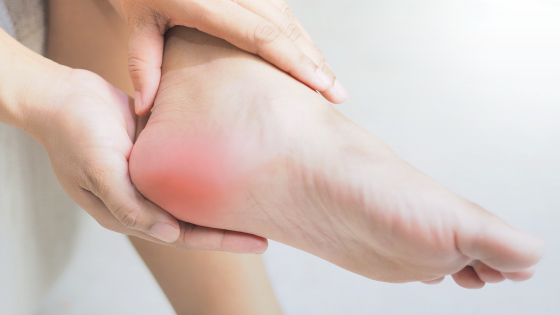1. WHAT EXACTLY IS PLANTAR FASCIITIS?
Plantar Fasciitis involves pain and inflammation of a thick band of tissue, called the Plantar Fascia, which runs across the bottom of your foot — connecting your heel bone to your toes.
Plantar Fasciitis causes sharp and/or burning pain that usually occurs with your very first steps in the morning. Once your foot loosens up, the pain of plantar fasciitis normally decreases, but it may return after long periods of standing, getting up from a seated position, or running/walking.
2. WHAT ARE THE CAUSES AND SYMPTOMS
The causes and symptoms are varied, but below is a list of causes we find to be the main root causes of Plantar Fasciitis.
- Tight calf muscles will increase pull and tension on the Plantar Fascia.
- Altered foot function: Excessively flat or high arches.
- Lack of big toe extension- Upward movement of the big toe.
- Tight hip flexors will reduce the ability to use Gluteals in ‘push off.’
the phase of the stride, hence increasing the workload on the Plantar
Fascia and calves. - Reduced glute and hamstring strength will again increase the demand on the calves and Plantar Fascia, predisposing to an overload of these structures.
- Worn-out/Improper shoes
- Sudden increase of walking or running frequency, duration or surface
3. WHEN SHOULD YOU SEEK MEDICAL HELP AND HOW WILL A DOCTOR EVALUATE THE PROBLEM?
You should seek medical attention if your pain persists over the course of a week or so, if your pain is so severe that it is affecting your daily activities, or if the onset of pain was some sort of trauma. X-rays are not always necessary and would most likely only see a possible heel spur.
4. WHAT IS THE NORMAL COURSE OF TREATMENT FROM THE MOST CONSERVATIVE TO SURGERY PERHAPS?
The ideal course of care for Plantar Fasciitis is to start conservatively and progress from there. Conservative treatment plan lengths may vary depending on severity, how long it has been going on, previous occurrences of it, and many other factors that would be discussed with you at the time of history and examination. Chiropractic care is a great conservative approach to help. If the below conservative methods don’t work for your, other physicians may be able to offer medication, injections or procedures to relieve your condition. It is recommended to try 4-6 weeks of conservative care before opting for me invasive surgical procedures. Be careful, as invasive approaches including injections and surgery have their own list of potential short and long term side effects.
Stretching for the Gastrocnemius (upper calf), Soleus (lower calf), hip flexors (front of the hip) and the Plantar Fascia. Secondly, you need to be evaluated to determine if you have excessively flat or excessively high arches. If you have flat feet, an orthotic may be beneficial. Manual therapy such as Active Release, Graston Technique to the calves, Achilles, and Plantar Fascia are instrumental in achieving resolution of pain. Lastly, strengthening of the glutes and hamstrings (along with hamstring flexibility) are vital to the proper biomechanics of the lower body.
5. HOW CAN WE AVOID THIS CONDITION MENTIONING VARIOUS TYPES OF SPORTS, THERAPY FOOTWEAR, ETC.?
From a physical standpoint, the best way to prevent Plantar Fasciitis is to obviously correct the causes by performing stretches and exercises to correct any of the above dysfunction. Runners and walkers tend to get this condition the most in my experience, so proper technique, footwear, mileage increases, and surfaces should be addressed and improved as much as possible.


